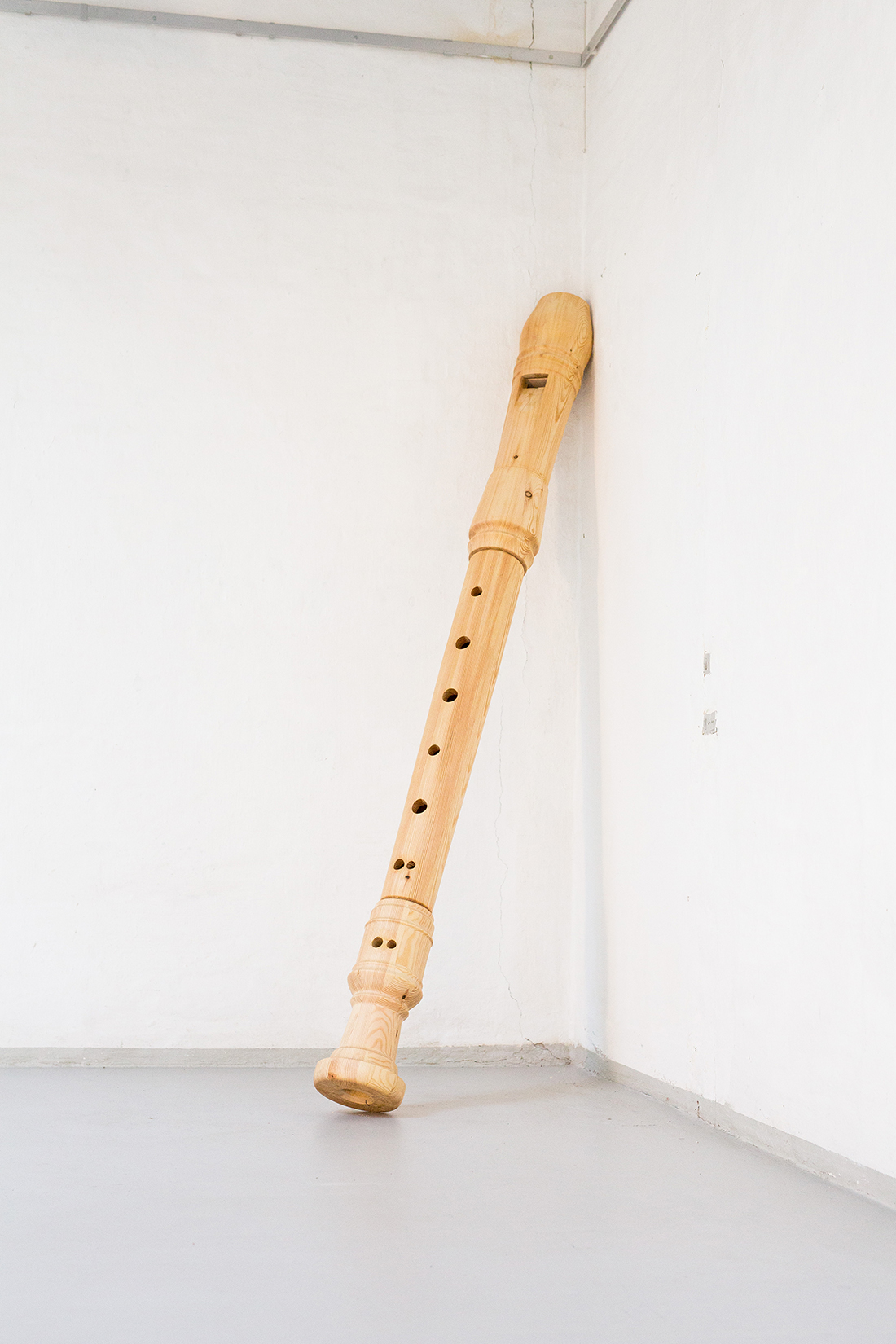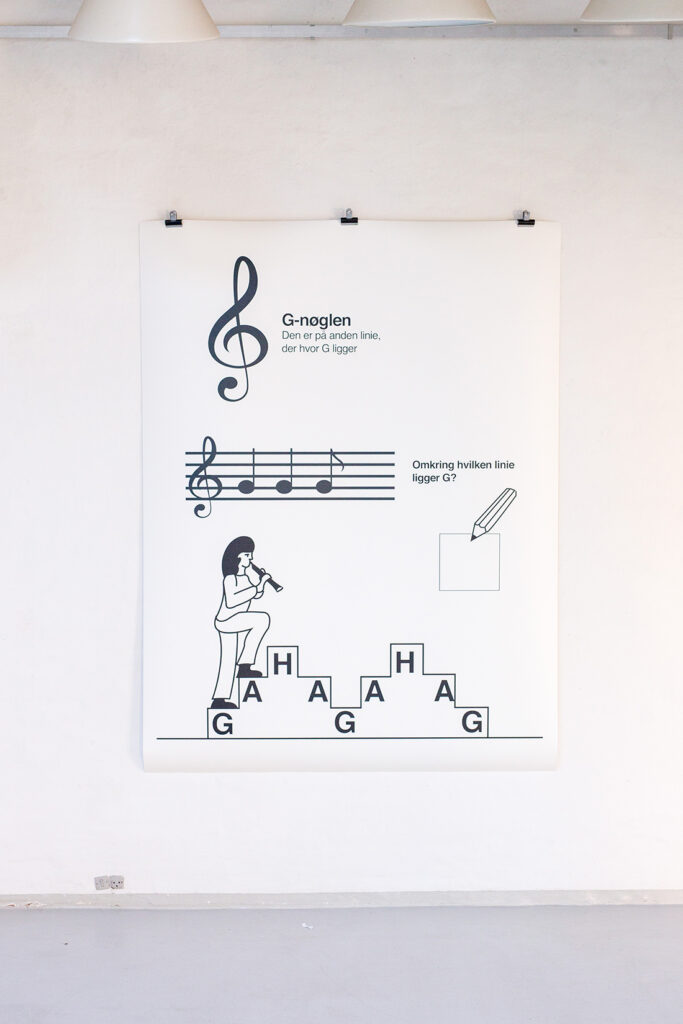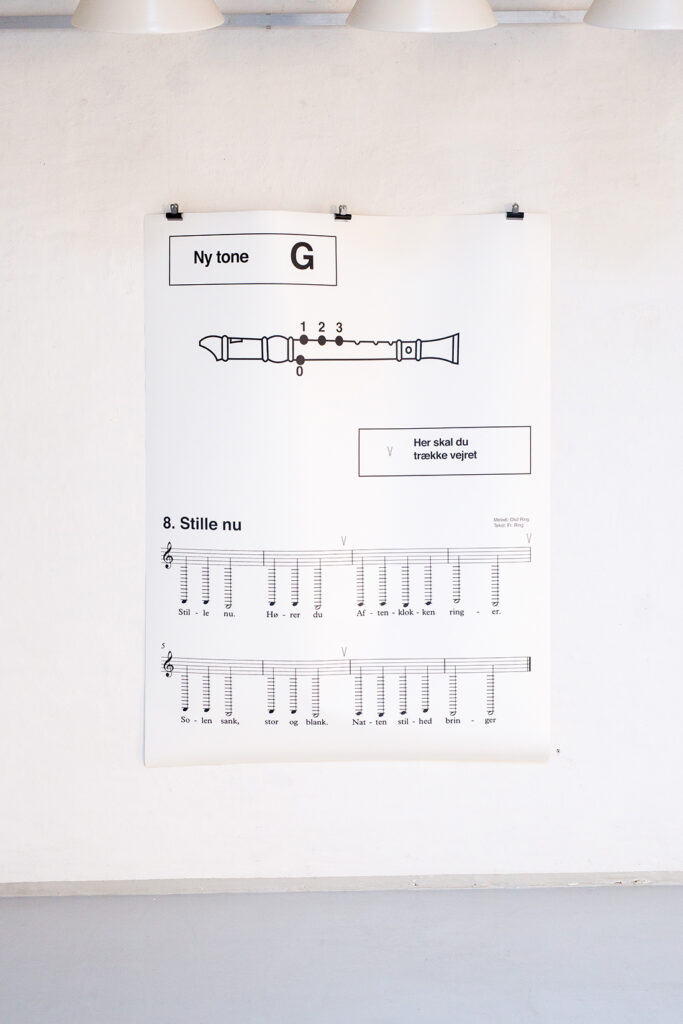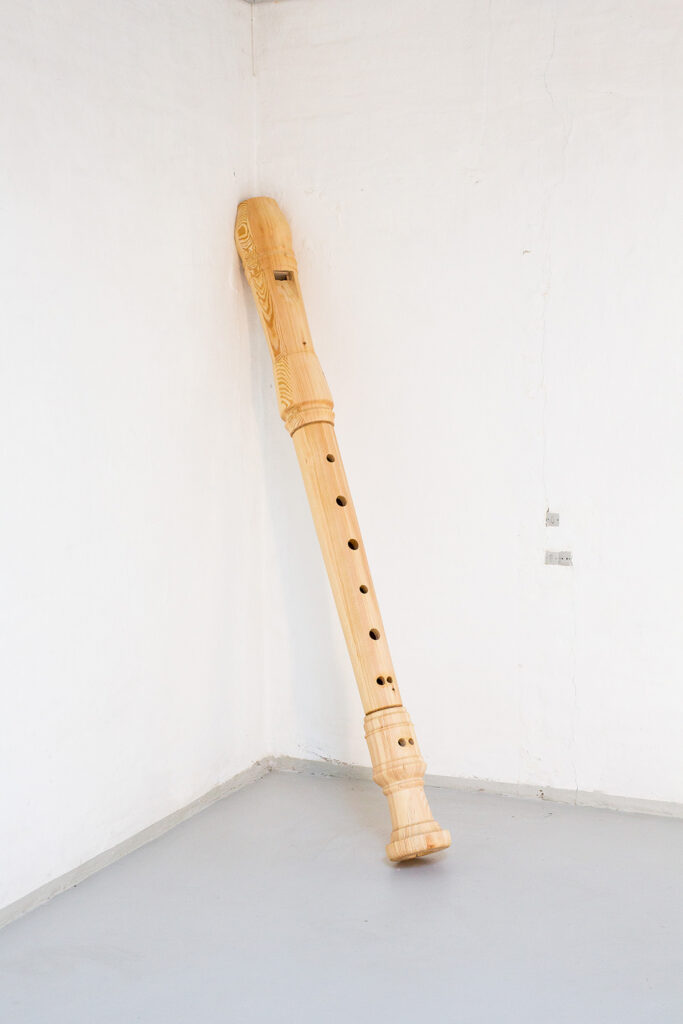Music for Children
[materiale(r)]
[årstal]
[mål × mål]
[evt. gallery + uds.år]
[fotokreditering]
Music for Children is a wooden sculpture in the shape of an oversized, monumental version of a recorder flute. By upscaling the size of a regular recorder almost tenfold, the instrument achieves an ambitus or tonal range that ranges from the high C to the low C2, the lowest pitch of the lowest male voice. In this way, the recorder flute, which is often thought of as noisy and shrill, is granted a monumental and pillar-like stature. In the 1920’s the German music pedagogue Carl Orff developed “Music for Children,” an innovative theory about children’s musical education, together with Gunild Keetman. In Music for Children, the recorder was implemented as a tool to use before learning to play real instruments. The recorder is still widespread in schools around the world as a learning instrument especially for young girls.



